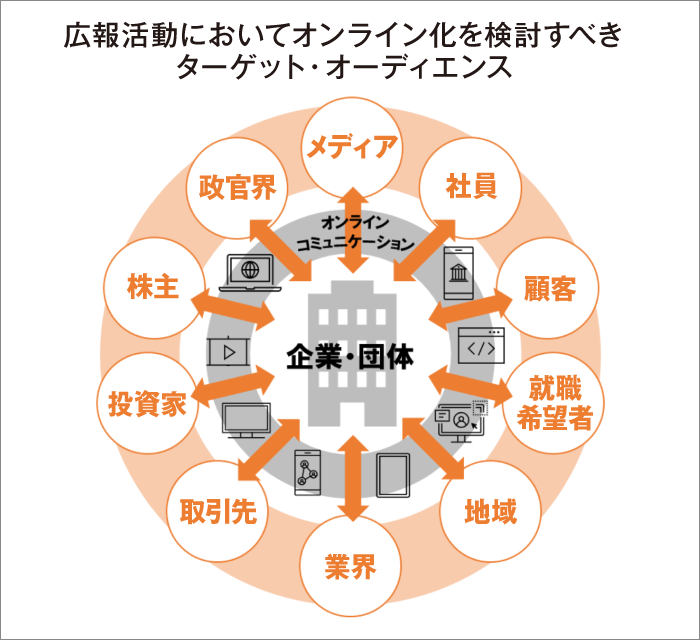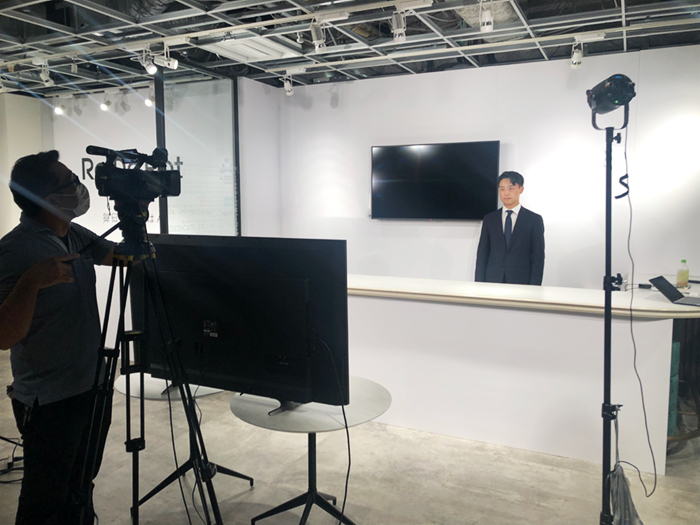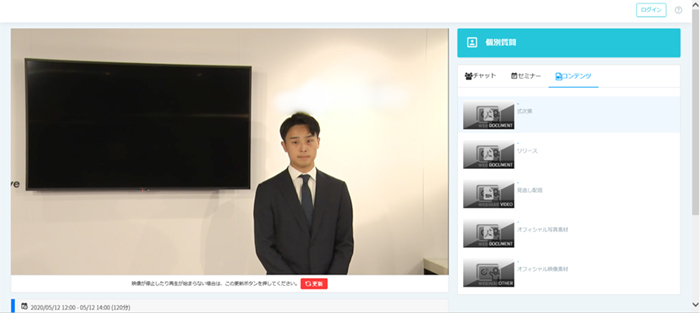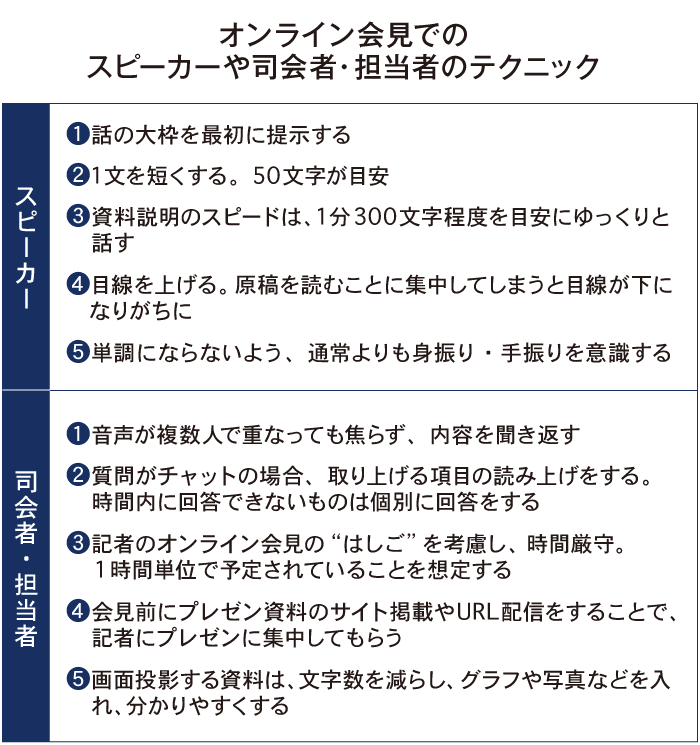The spread of the novel coronavirus (COVID-19) has accelerated the shift to online communication. Corporate public relations activities are no exception, and Dentsu Inc. Public Relations (hereafter Dentsu Inc. PR) has seen a surge in inquiries about transitioning to online formats. This article focuses specifically on "media relations."
Rapid Digital Transformation of PR Activities During the Pandemic
First, let's briefly review the timeline of the pandemic and media response efforts thus far.
On February 26, following the government's request for voluntary restraint on event hosting, many companies decided to cancel or postpone various press conferences and events scheduled for March. For those that proceeded, the focus shifted to a hybrid model combining in-person and online formats, typically with reduced scale.
After the state of emergency declaration on April 7, online press conferences became the default approach. Particularly after the Kabuto Club requested companies refrain from holding earnings briefings and submitting press releases on the following day, April 8, more companies began preparing for online earnings briefings.
Furthermore, attention focused on "hybrid virtual shareholder meetings" for the shareholder meetings concentrated in June. These meetings maintain a physical venue while allowing online participation/attendance. Currently, 46% of companies are either implementing or considering such shareholder meetings (according to the Corporate Public Relations Strategy Institute).
Recently, we've seen increased inquiries regarding new president announcements, messages for employees amid prolonged remote work, and online customer communication. Developing tailored messages for stakeholders and creating engaging online content to maintain customer interest are key challenges.
In summary, as shown below, the situation calls for considering online communication with all stakeholders.

Created by Dentsu Inc. PR
How to Communicate with Reporters During Online Press Conferences
When the COVID-19 pandemic began to escalate, many consultations regarding online press conferences centered on the question: "How should communication with reporters (the exchange of questions) be handled?"
During actual online press conferences, various methods were tried, including telephone conferences, chat, dedicated email for questions, and individual contact. Some companies adopted the strategy of using the "reaction icon" on the video screen of the conference app as a "raise hand" signal.
After several months of trial and error, it appears that "question chats" have become established among the companies supported by Dentsu Inc. PR.
Initially, when using chat, it was common for organizers to collect questions from reporters, select representative ones, and then answer them. However, recently, the prevailing judgment has been that "making all chat questions public is fairer and makes high-interest topics easier for participants to understand."
Concerns were also raised that "going online might reduce media coverage," but in cases supported by Dentsu Inc. PR, there was no particular decrease in coverage. Rather, footage and materials from online press conferences are being utilized by many media outlets.
Regarding media reactions, initially
"It's meaningless without a press scrum."
"The materials provided (through online press conferences) alone can't make news."
However, as the pandemic prolonged and online press conferences increased, the current stance is:
"We've significantly reduced external interviews and filming. We've completely shifted to how we utilize remote footage."
(Tokyo-based TV station news program staff)
The perspective has definitely changed.


Online press conference setup. Top: Studio view; Bottom: Screen for reporters
Now, not limited to press conferences, there are concerns in online communication about "not being able to see or gauge the other person's reaction." And when you can't see the other person's reaction, there's a tendency to focus on reading materials aloud and speak too quickly.
While it's important to act as you would in person, here are some techniques for speakers, moderators, and representatives during online press conferences.
Providing Information to Media During the Pandemic
With the spread of COVID-19, many media outlets adopted remote work, dividing staff into on-site and remote teams.
TV stations have curtailed location shoots and studio recordings, while publishers have postponed publication dates. Web media, meanwhile, quickly shifted to online interviews.
In news and information programs, maintaining distance between anchors and having guests participate remotely has become commonplace. Recently, dramas produced entirely via telework have also appeared, demonstrating various approaches being taken.
Amidst this, media outlets have voiced the following opinions regarding corporate information provision during the pandemic:
We understand that various initiatives may be canceled or postponed, but we hope companies will continue providing information. We are still actively pursuing stories unrelated to COVID-19.
(Tokyo-based TV station news program staff)
We want information from the perspective of what constitutes essential information for consumers and what companies can do.
Corporate releases have decreased, leading to a shortage of story ideas.
(Digital Editorial Department, Newspaper Company)
In this environment, examining corporate communications reveals a clear trend: leveraging their strengths and assets to address social issues, and effectively communicating these efforts.
This time, we focused primarily on online communication for media within corporate PR activities. Going forward, we anticipate further development of online initiatives targeting various stakeholders and diversification of usage scenarios.
The digital transformation of PR activities for each stakeholder group is likely to become the most significant theme for relevant departments.
Next time, we plan to cover "PR Gaining Recognition During the Pandemic: Five Key Characteristics Seen in Overseas Cases."







